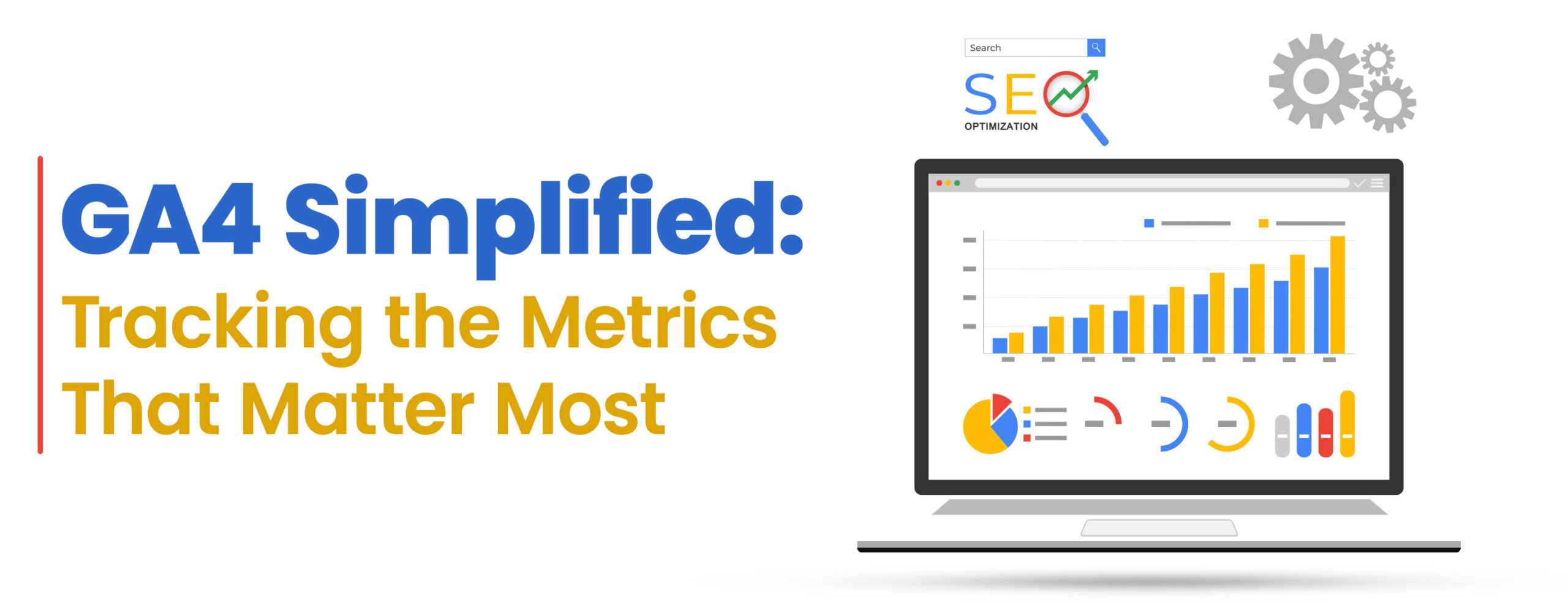
Unlike the previous universal forms of analytics, Google Analytics 4 is a new service by Google that has surprised marketers, business owners, and even professional analysts. However, you need to evolve with time, and that involves learning and unlearning new ideas, algorithms, and work processes.
If you spent hours searching for “GA4 metrics explained,” then go no further. This article will be your Google Analytics 4 guide. We, as a digital marketing agency, have tried to simplify the analytical metrics for your understanding and clear out the extra noise. The website tracking metrics will help you utilise what works and what does not work for your website and work accordingly.
First Why Should You Care About GA4?
The marketers do feel a little disturbed about this new shift; however, Google didn’t redesign it with that purpose. The usage of GA4 is to reflect and analyse how people behave in today’s modern world, considering one user having multiple devices, privacy concerns and unpredictable psychology. The new analytical services are not just a mere upgrade; it’s a complete rebuild from ground zero to be able to track dull customer journeys while they are digitally active.
The good news? With the right GA4 setup for businesses, you can unlock far more useful, actionable insights than you ever could before.
The bad news? It’s not exactly intuitive — unless you know what to look for.
Understand Where Most Businesses Go Wrong
Too often, we see teams obsess over vanity metrics — pageviews, bounce rate (RIP), or user counts with no context.
GA4 is here to flip that. Instead of feeding you meaningless numbers, it encourages you to ask better questions:
- Who are my most engaged users?
- What parts of my site actually drive action?
- Where am I losing potential leads?
But to get there, you need to understand the right metrics to track.
Let’s break them down.
GA4 Metrics Explained: The Metrics You Should Actually Track
Forget the laundry list of KPIs for now. These are the ones that actually move the needle.
1. Engagement Rate
Unlike bounce rate, this metric tells you how many meaningful sessions occurred — not just visits, but sessions where users stayed, clicked, or converted.
Why it matters: It shows real interest, not accidental landings.
2. Average Engagement Time
This is your new go-to for understanding time-on-site. It tracks how long users are actively paying attention.
Why it matters: The longer the attention, the stronger your brand stickiness.
3. Event Count
In GA4, everything is an event — from scrolls to video plays to purchases. You can track almost anything.
Why it matters: You get to define what matters. Clicks on CTAs? Form submissions? Downloads? You choose, you track.
4. Conversions
You mark specific events as conversions (unlike old UA goals). Want newsletter signups to count? Done. Purchases? Check. Button clicks? Sure.
Why it matters: No more guessing what success looks like. It’s literally marked.
5. User Acquisition
This shows where your new users come from — organic search, social, email, etc.
Why it matters: It tells you what’s working (and what isn’t) in your marketing mix.
6. Pages and Screens
Your top-performing content, as well as your digital dead zones, live here.
Why it matters: Create more of what works. Fix or ditch what doesn’t.
GA4 for Beginners
The biggest mental shift with GA4 is this: it’s not about visits anymore. It’s about interactions. Every scroll, click, or action is trackable and meaningful — if you define it right.
So instead of “How many people visited my site?”
Ask:
→ How many clicked ‘Add to Cart’?
→ How many dropped off at Step 2 of checkout?
→ Who played 75% of my explainer video?
That’s where website tracking metrics become conversion tools, not just data points.
Also Read: – How to Choose the Right Digital Marketing Strategy for Your Business
The GA4 Setup That Sets You Up for Growth
Setting up GA4 properly is non-negotiable. If your events aren’t tracking right, your data isn’t usable. For businesses, here’s what we always recommend:
- Install via Google Tag Manager (for full control)
Enable enhanced measurement (for auto-tracking basics like scrolls, outbound clicks) - Define key conversion events (aligned to your business goals)
- Link GA4 with Google Ads, Search Console, and BigQuery for deeper insights
Use DebugView to test events before going live
Yes, it’s a bit technical — but that’s where an agency like ours comes in.
Conclusion
GA4 is powerful. But power without strategy is just noise.
At Savvytree, we don’t just plug in the pixels and send you a PDF. We help you translate tracking into real-world decisions — from campaign tweaks to site redesigns to product changes.
Because the goal isn’t to understand GA4.
The goal is to understand your customer better — and use that insight to grow.



